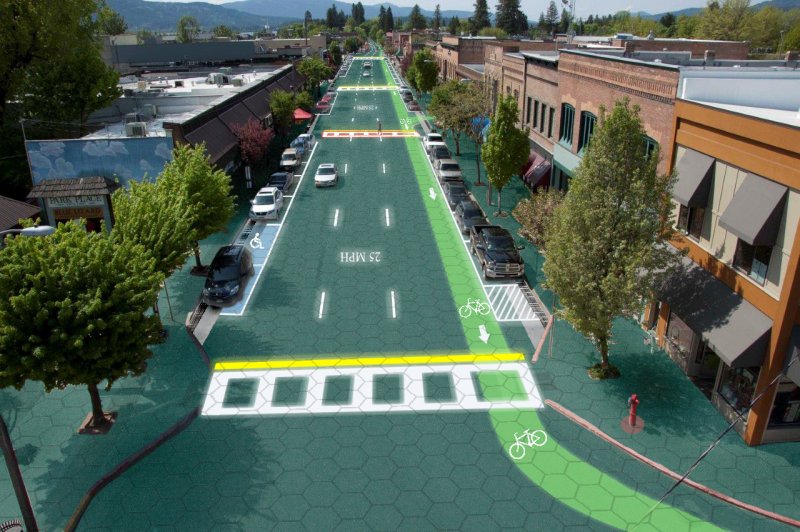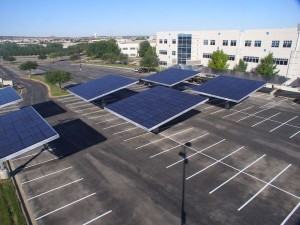Solar Panel Roads: Ups and Downs
Imagine this: solar panel roads. No more asphalt, but instead a popular technological device that soaks up sun and turns it into energy that we can use. Solar Roadways Inc from the U.S. have decided that roads, footpaths, car parks and driveways can become a lot more useful.
The idea, currently in its early stages of testing and development, is to replace asphalted surfaces with interlocking solar panels, fitted with programmable LED lights capable of creating necessary configurations (lanes, stop signals, warnings, etc) and all of this stored safely underneath a durable glass material. The idea is being both praised and doubted. Although more solar panels on Earth can only be a good thing, there are some issues concerning feasibility.
Advantages and Disadvantages of Solar Panel Roads:
The first thing to point out is that this could of course be a great source of renewable energy. The successful implementation of these solar panel roads on a large scale could mean less dependability on fossil fuels in the future and more jobs created in order to install the panels. Sounds like a good idea, right? In many ways it is, but the main problems facing this development now are cost and material effectiveness.
 The proposed glass material that would cover the solar panels themselves is extremely expensive and raises issues about traction efficiency. Glass is not typically used as a material for traction purposes, and even though the glass for the solar roads features an indented design, it is difficult to imagine this material would act as a safe driving surface in wet weather conditions. As well as this, one of the reasons we use asphalt is that it is highly durable and can withstand years of use before needing repairs. Dirt and tires are likely to grind the glass over time, and water is likely to seep in between panels, meaning expensive repairs more often.
The proposed glass material that would cover the solar panels themselves is extremely expensive and raises issues about traction efficiency. Glass is not typically used as a material for traction purposes, and even though the glass for the solar roads features an indented design, it is difficult to imagine this material would act as a safe driving surface in wet weather conditions. As well as this, one of the reasons we use asphalt is that it is highly durable and can withstand years of use before needing repairs. Dirt and tires are likely to grind the glass over time, and water is likely to seep in between panels, meaning expensive repairs more often.
One issue environmentalists are concerned about regarding this technology is the amount of light pollution that might be caused by the inlaid LED lights. It has been suggested that this is an unnecessary design feature; car headlights allow us to see what we need to see on the road, while LED signals on the road will be almost impossible to see under full sun and from a shallow viewpoint in a car. The light pollution could be substantial, as roads would most likely be constantly illuminated with lane markings and any other signals.
Therefore, this inspiring and futuristic idea really depends on using materials that will serve as well as asphalt; something you can drive your car on for 20+ years before needing any repairs. Unfortunately, this is just not likely to exist in a cost effective or recycled material form right now. As ideas and prototypes are still under development at this stage there haven’t been many updates on the feasibility problems of solar panel roads. However, contenders of the idea have rather helpfully suggested perhaps not solar panel roads, but instead overhead ‘road ceilings’ or simply more solar panels alongside roadways.
 For example, Solar Roadways Inc were suggesting to replace car parks with solar panels. Cars are more likely to be parked in shopping center car parks, etc, during the day thus blocking the sun from even reaching the panels. Then, when most cars have left the car park, the sun will be down, rendering the panels useless. So how about this instead: build covers over car spots and have the solar panels installed there. Cars would be kept in the shade, and the panels are in direct sunlight.
For example, Solar Roadways Inc were suggesting to replace car parks with solar panels. Cars are more likely to be parked in shopping center car parks, etc, during the day thus blocking the sun from even reaching the panels. Then, when most cars have left the car park, the sun will be down, rendering the panels useless. So how about this instead: build covers over car spots and have the solar panels installed there. Cars would be kept in the shade, and the panels are in direct sunlight.
Both ideas have their advantages and disadvantages of course, but either way, large scale solar panel technology like this is certainly an interesting gateway to the future of renewable energy. Share your thoughts and ideas; perhaps other sources of renewable energy can be enhanced to secure a renewable future…


